Giving medical scribes a safe and effective way to type on the go.
🌲 Dartmouth College. 🖱 Product Design. ❤️ Human-Centered Design.
Our goal was to design a wearable desk product for medical scribes and nurses, who have to transcribe for hours a day without any surfaces to type on.
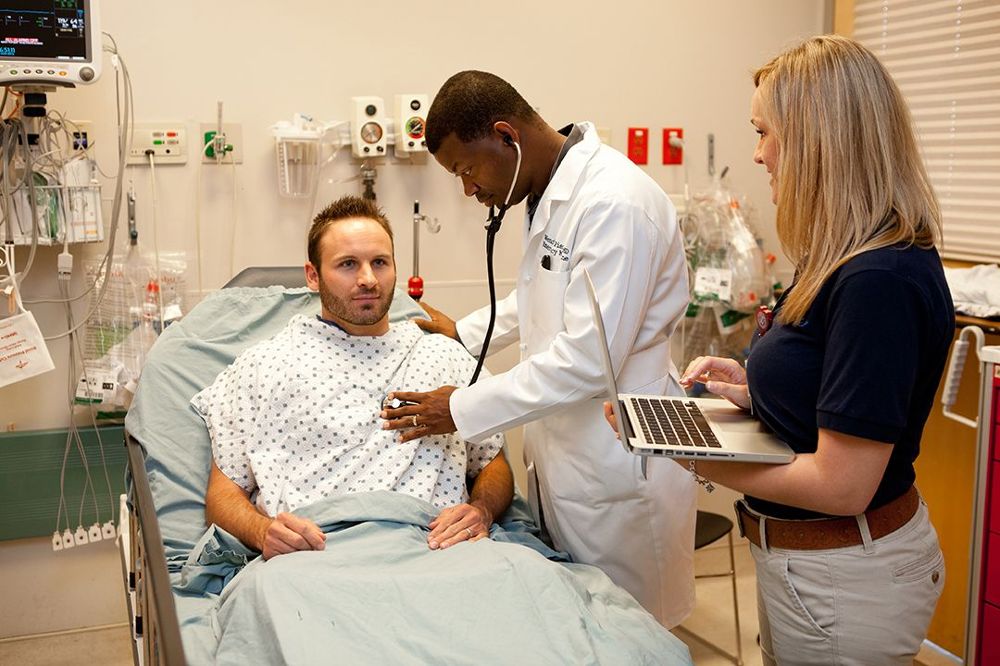
Introduction
In the US, 100,000 medical scribes need to type on the go during 8-12 hour shifts to enter data on laptops, but hospitals lack sufficient surface space for them to use devices. My team created the "TypeTop", an attachable board and belt system made of a rubber-coated polypropylene board and a memory foam belt. The TypeTop enables users to comfortably operate laptops while standing, sitting, or mobile without the risk of dropping and damaging devices and appeals to medical scribes, and hospitals and scribe companies.
We found our needs after interviewing medical scribes and nurses, who felt pain and fear when they typed. Some balanced their computers on one hand while they slowly typed with their other hand. Others precariously pressed their laptops onto their thighs and hunched over to type. Not only did this strain their arms, neck, wrists, and back, but they were constantly afraid of dropping their expensive devices. After our initial interviews, we took to the internet and researched our problem magnitude, potential customers, and current state-of-the-art.
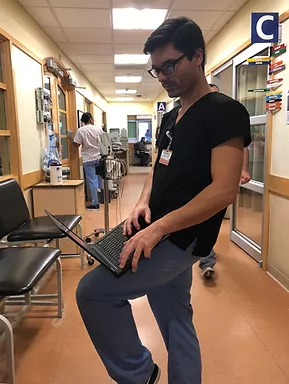
Source and Magnitude of the Problem
In the US, 99% of hospitals utilize electronic health records (EHR) for patient information. The rising need for timely EHR entry creates a growing demand for medical scribes. Our product improves record-keeping efficiency and reduces occupational challenges with laptop and EHR use, saving money and time.
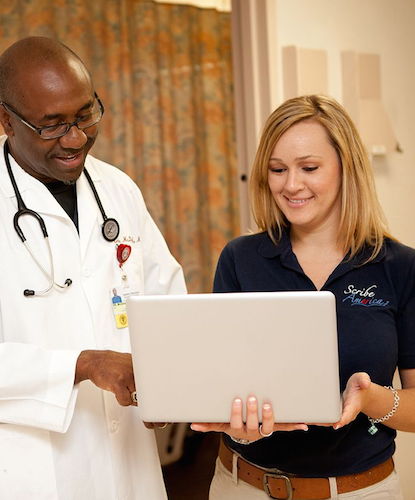
Customer Profile
We will targeted hospitals and the 22 medical scribe companies in the US as our potential clients because of their bulk purchasing capability and large patient processing needs.
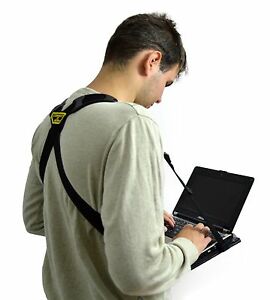
State of the Art
A few companies have attempted to address our problem statement, but their products are prohibitively expensive, bulky, low-quality, and painful to use for our user group. Numerous patents also exist without associated products, but are difficult to install and uncomfortable for extended duration use.
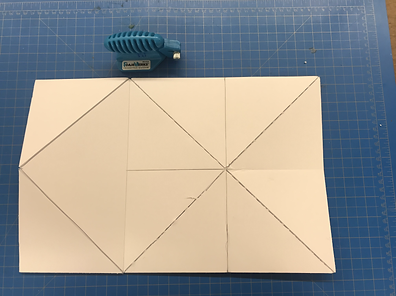
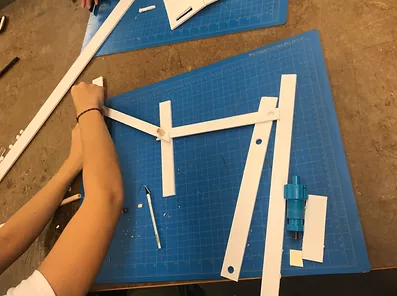
Design Process
To determine safety, we analyzed the ergonomics of the wrist, neck, and back angles when using the model, and consulted with an ergonomist from the DHMC. To test comfort, we prototyped different padding materials and attachment mechanisms, and received user feedback. The device must also be stable enough to withstand the downward force of a laptop, which we simulate with weights. As medical scribes expect to put on and take off the product multiple times during their work shifts, our design must have an installation, removal, and storage time of no more than 20 seconds each.
We jumped right into prototyping with foam core, which is one of my favourite materials in the world. We began by simultaneously mimicking state-of-the-art solutions and going wild with our creativity. What if the wearable desk connected to your shoulders and thighs? Or just the neck? What if it was a two-piece product that magnetized together beautifully like origami? We started by designing with no constraints before we narrowed down these initial designs through using our intuition and user testing.
We developed 5 initial prototypes based on our testing criteria. Prototypes 1, 2, and 3 test different weight-bearing mechanisms; 1, 3, and 5 tested different desk materials; 2 and 4 experimented with collapsible or lightweight designs. Our preliminary designs have an additional flap that slips in between the belt and the user’s stomach, effectively securing the desk to the belt. Both the flap and the wedge help stabilize the board.
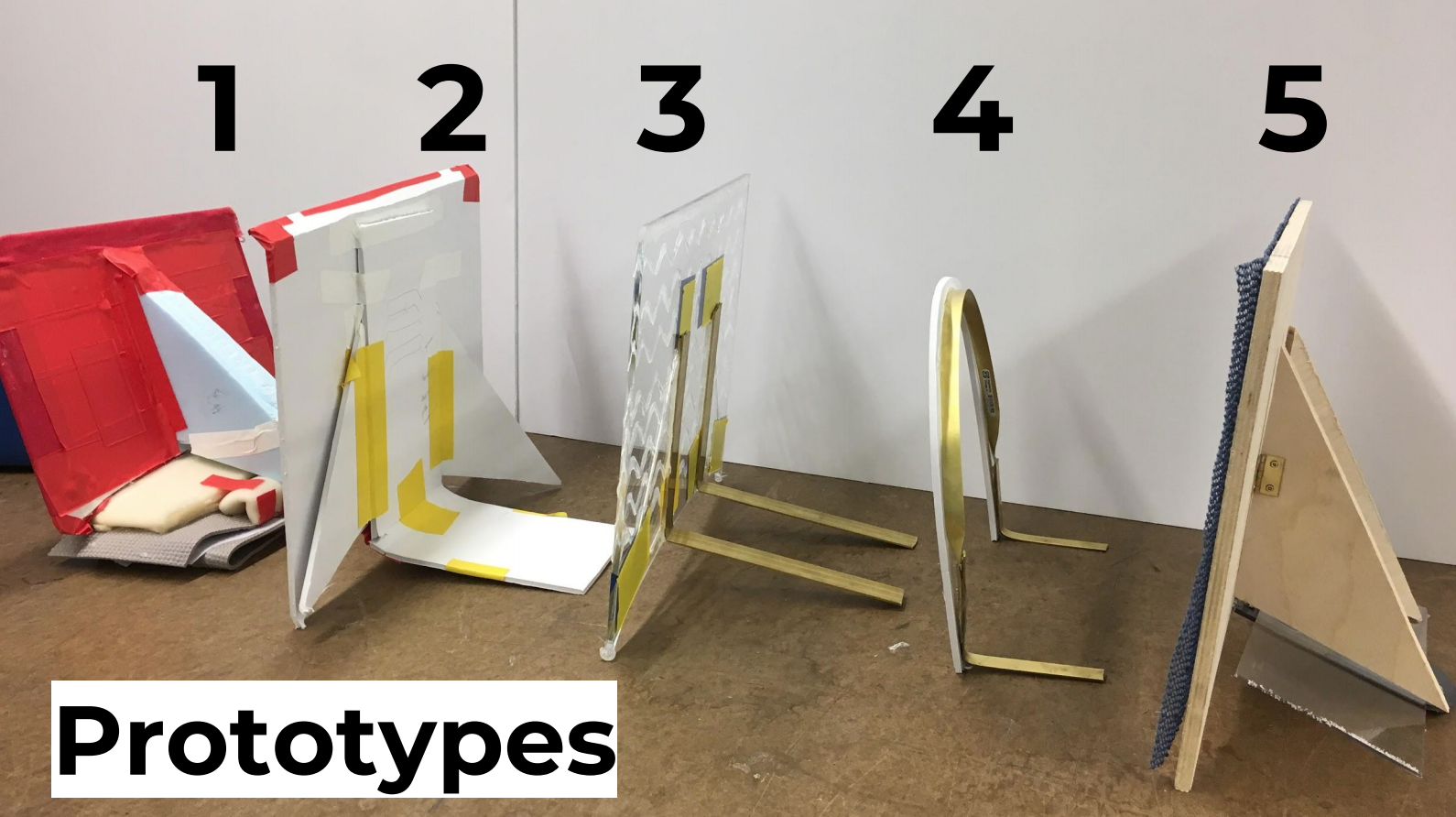
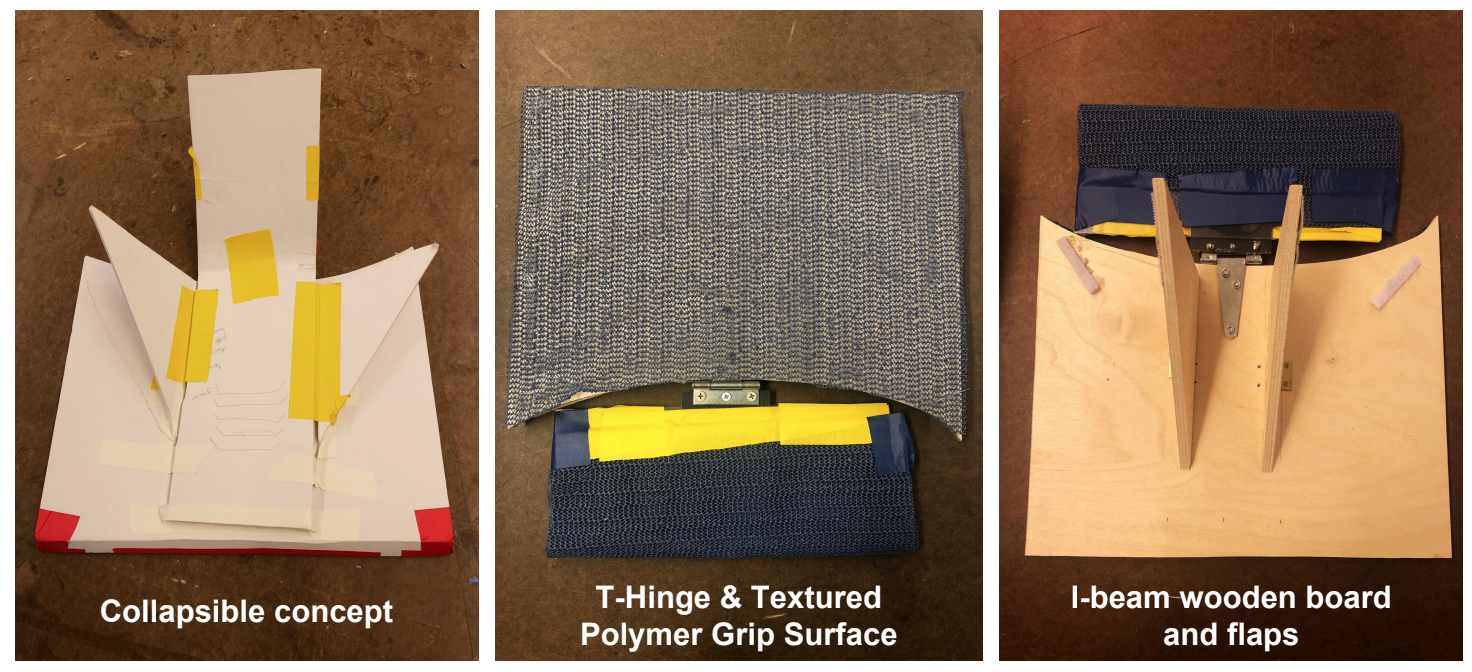

Results
We interviewed Ergonomist Tarah Cantore, physicians, medical residents, and nurses at Dartmouth Hitchcock Medical Center to learn more about user preferences and needs. Interviews confirmed the need for portable surfaces, especially for residents and medical scribes who do the majority of the data entry and often lack offices or desks. Subjects were interested in a compact, wearable design that could easily detach and fold away. We also contacted Dartmouth students who work as medical scribes to learn more about the context of EHR data entry. In preliminary usability surveys, the wearable desk prototypes 1 and 2 outperformed the state-of-the-art (Connect-a-Desk).
Our prototype was 1.4 times faster (18 seconds) to install and scored 80% higher for comfort when aggregating average scores for users’ shoulders, stomach, upper back, lower back, and hands. The prototype improved upon comfort in all individual categories except for lower back, so we took note that future iterations of the prototype will focus on better distributing the weight burden.
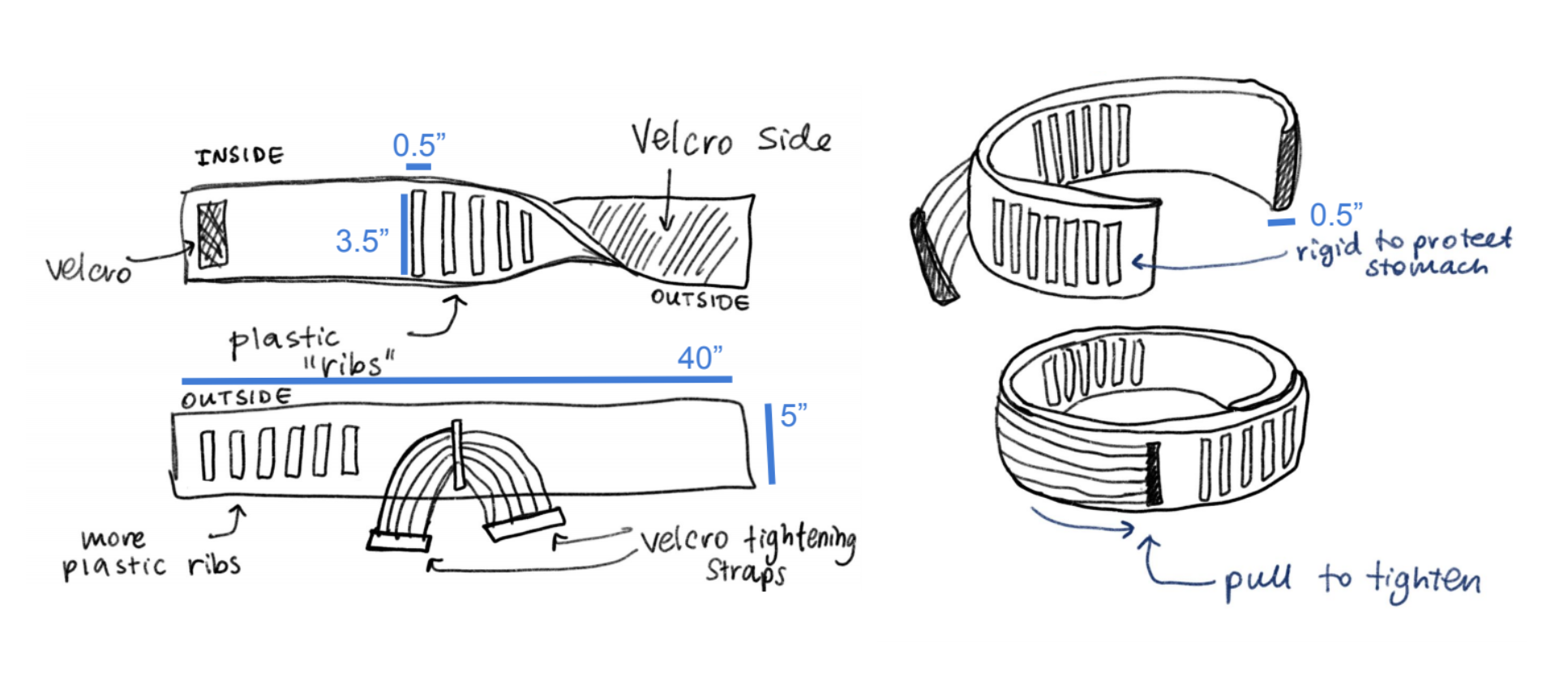

Final Product
Our final product combined the best parts of each prototype: a comfortable belt, easy-to-use attachment mechanism, lightweight yet sturdy material, grippy surface, and foldable table.
"[The Typetop is] super helpful and pretty comfortable. I’m surprised no one has done it before... I think any scribe would want something that would ensure they have a surface to type on.” – Medical Student and Former Head Scribe
Customers responded that the final prototype looks more professional and is easy to put on, and prefer it to previous bulkier models. Suggestions included adding velcro strips to the bottom of a laptop and the desk to increase device security. The customer saw potential in our device as vital for less experienced or physically smaller scribes who, according to the customer, often complain about pain and have difficulty typing without a surface.
Over these 10 weeks, we aggressively iterated through 10 prototypes and combined the best of each design into our final model. We have filed a provisional patent for our wearable design. The TypeTop design now satisfies the medical scribe in comfort, quick installation, and collapsibility. By addressing this widely overlooked inefficiency and health hazard, we improved the quality of life of medical scribes everywhere who currently support their laptops with one arm and type with the other during 4 to 8-hour shifts.
Connect with me!
If you're a student who wants to know more about product design, a small team looking for a freelancer, or just another poodle-owner, hit me up on Linkedin or shoot me an email at theia.y.qu@gmail.com.
